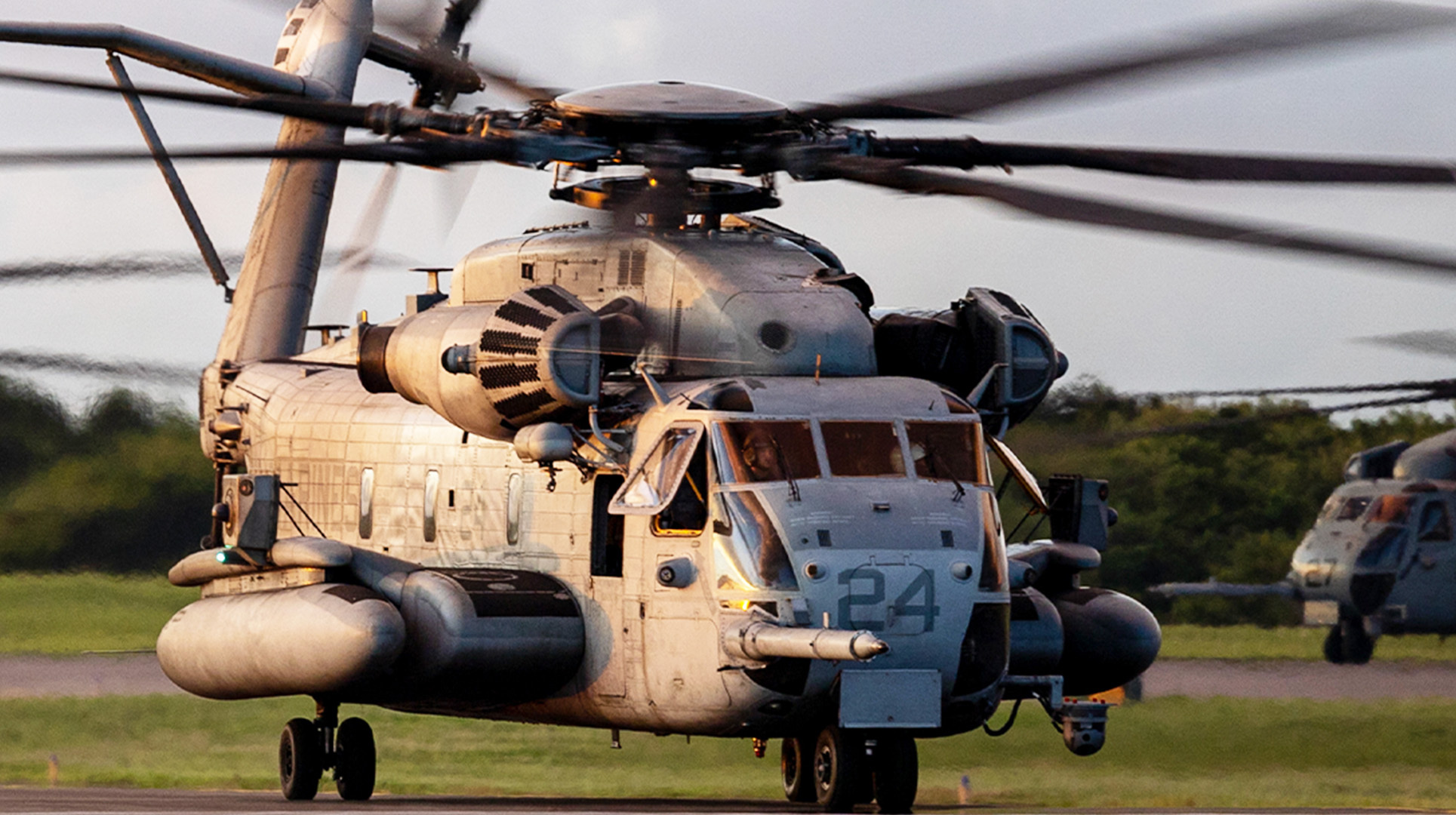

Update, Feb 8, 8:30 a.m.: All 5 Marines aboard the CH-53E were confirmed to have been killed in the crash. Task & Purpose will be tracking the latest information on the crash here. The original story on the search is below.
A missing Marine CH-53E Super Stallion helicopter has been located in California, and search efforts for the five Marines who were aboard the aircraft remain ongoing, Corps officials announced on Wednesday.
The aircraft is assigned to Marine Heavy Helicopter Squadron 361, Marine Aircraft Group 16, according to the 3rd Marine Aircraft Wing. It was flying from Creech Air Force Base, Nevada, to Marine Corps Air Station Miramar, California, on Tuesday when it was reported overdue.
“The aircraft was located by civil authorities in Pine Valley, California, at 9:08 AM PST on February 7, 2024.” the wing said in a statement. “The 3rd Marine Aircraft Wing is managing search and rescue efforts through the Wing Operations Command Center and using ground and aviation assets to locate the aircrew in coordination with the San Diego County Sheriff’s Department and multiple federal, state and local agencies.”
Subscribe to Task & Purpose today. Get the latest military news and culture in your inbox daily.
CH-53Es are some of the oldest in the Marine Corps aviation fleet, first entering service in 1981. According to a 2017 report from Vertical911, a helicopter trade magazine, the CH-53E requires 40 hours of maintenance for every hour of flight. The Marines had shifted much of their heavy lift flying to MV-22 Ospreys while the first of a newer, more-capable version, the CH-53K, was delivered to the Marine Corps in 2022.
During the Marine Corps’ aviation crisis in the last decade, CH-53Es had the most serious readiness problems of all Corps aircraft. The mission capable rates for CH-53E helicopters dropped from 63% in 2009 to 28.5% in 2016, meaning that little more than a quarter of the Corps’ fleet of roughly 147 CH-53Es could fly on any given day.
An investigation into a January 2016 collision between two CH-53Es that killed 12 Marines aboard both aircraft found that the helicopter squadron to which the helicopters belonged struggled with readiness and maintenance issues, in part because the helicopter is no longer in production, adding the time it takes to secure spare parts.
But the CH-53E has been pushed back into more direct service in recent months after the Marines grounded all 350 of their Ospreys in December following a series of crashes.
The commander of the 31st Marine Expeditionary Unit recently told reporters that, during an extended deployment in the Pacific, his unit had to rely more on CH-53s and other heavy lift helicopters after the Osprey grounding, which followed a fatal Air Force Osprey crash in November that killed all eight crew members aboard the aircraft.
UPDATE: 02/07/2024; this story was updated after the 3rd Marine Aircraft Wing announced that the missing CH-53E Super Stallion helicopter had been found.
The latest on Task & Purpose
- Fired Navy Captain created ‘toxic’ climate, grabbed and struck crew on duty
- What’s the difference between Army Rangers and Green Berets?
- When a veteran lost his farm, fellow paratroopers came to the rescue
- Sergeant, it’s cold outside! How the Army is revising its wind chill rules
- Everything you need to know about Ranger School
